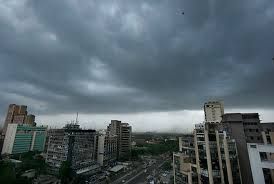 | « Back to article | Print this article |
 Frequent power cuts are not the only side effect of the scorching heat and delayed and deficient monsoon urban consumers are faced with.
Frequent power cuts are not the only side effect of the scorching heat and delayed and deficient monsoon urban consumers are faced with.
There are chances of taps running dry and prices of fruits and vegetables spiking.
And with no respite from high inflation in sight, the possibility of interest rates coming down is low, belying hopes of reductions in the equated monthly instalments on home or vehicle loans any time soon.
Does this suggest the predicted deficiency in monsoon rain is likely to impact urban consumers more than their rural counterparts?
In the past 10 years, we have had two drought years -- 2004 and 2009 -- and monsoon rain was below normal in 2012.
This year, too, rain is likely to be below normal.
Monsoon deficiency leads to rise in prices of food articles in general and of fruits and vegetables in particular.
Average annual food inflation touched an alarming level of 15.27 in 2009-10, a drought year.
A similar trend was visible in 2012-13.
Data indicate food inflation impacts urban consumers more than their rural counterparts.
Trends in composition of monthly per capita expenditure on food items suggest that from 2004 to 2012, the period of high food inflation, the percentage consumption of pulses rose faster in rural areas than urban centres.
And the decline in percentage consumption of fruits and vegetables was sharper in urban areas than in the countryside in the same period.
“People living in villages generally have to pay less for farm produce.
It is, therefore, likely that the recent spike in food prices would have had minimal impact on villagers,” observes Ajay Jakhar, chairman of the Bharat Krishak Samaj.
Rating agency ICRA’s senior economist Aditi Nayar agrees.
“High food prices squeezed disposable income for urban consumers,” she says.
Another casualty of a deficient monsoon is the dip in power generation, especially hydroelectricity.
This happens at a time when demand for power goes up.
In 2009-10, hydroelectricity generation dipped by a whopping 10 per cent and in 2012-13, the fall was to the tune of 6.82 per cent.
However, 2004-05 was the only drought year when power generation had seen a marginal uptick of 0.59